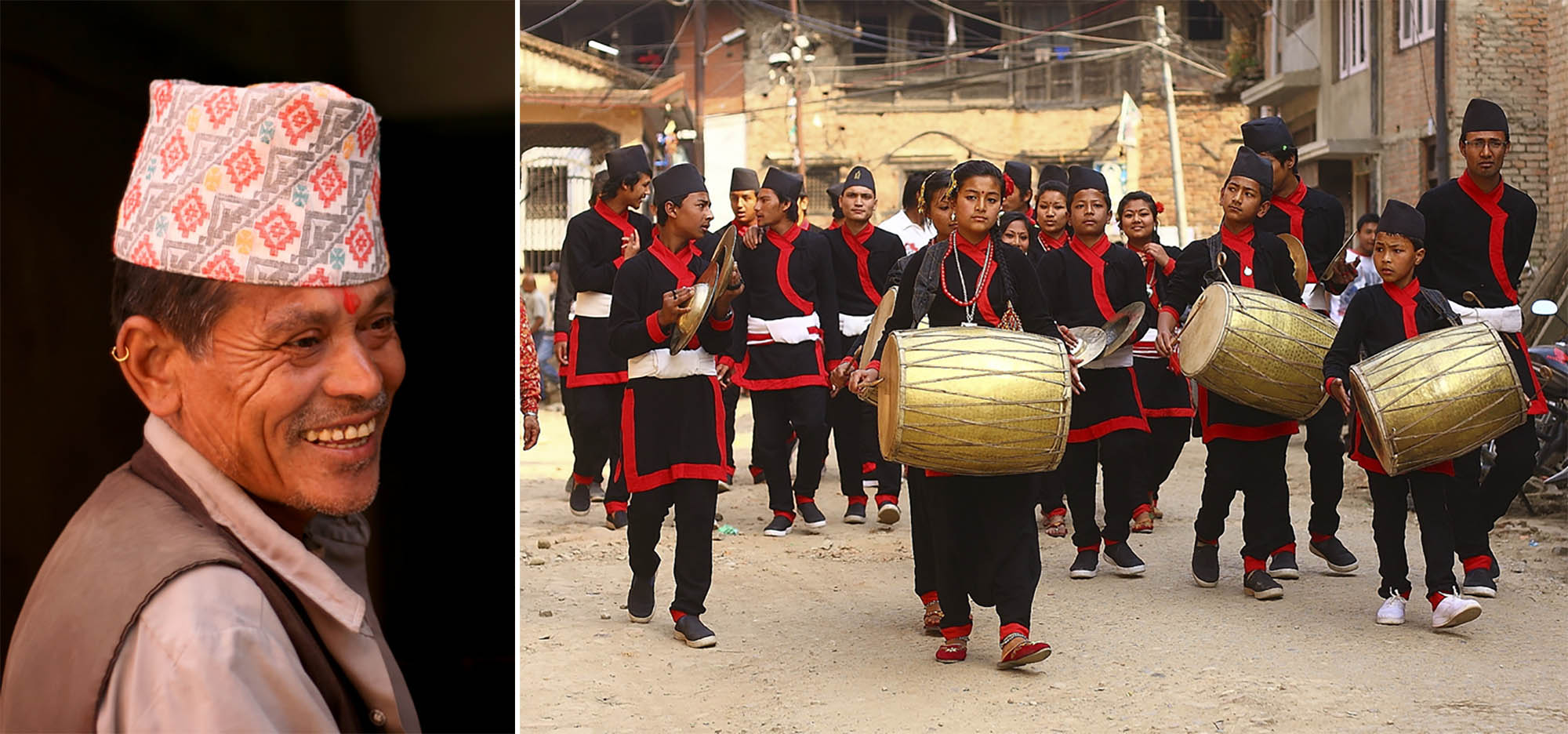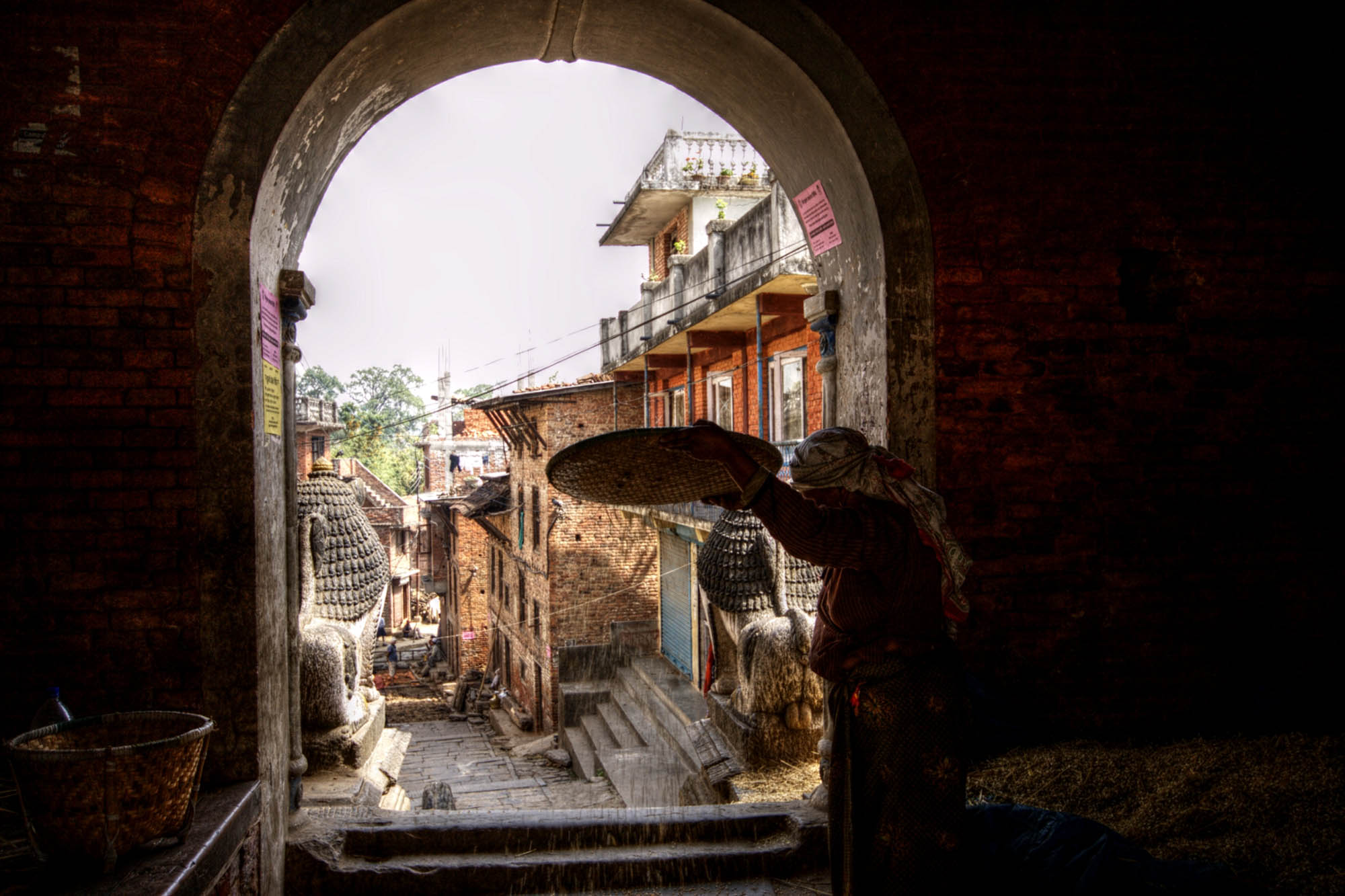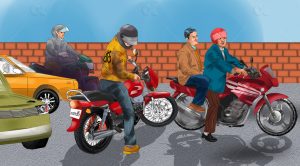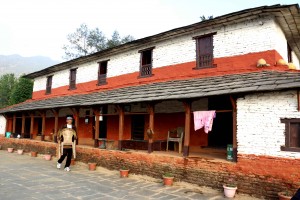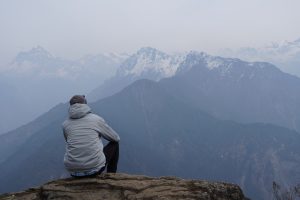Around a bend on the road, I passed a man with a bamboo pole balanced on his shoulder. Suspended from either end of the pole were two tin containers. The drip marks on them were enough to tell me they contained mustard oil. Coincidentally, I was on my way to Khokana, the medieval Newar town south of Kathmandu city that is famous for its mustard oil. In fact, if you ever inquire from a person selling mustard oil where it’s from, nine times out of ten he will tell you that it’s from Khokana. It may not be, but mustard oil sells much better when ‘Khokana’ is prefixed to it.
But it’s not mustard oil or mustard plants you notice most in Khokana. It’s duck. They are in the streets sunning themselves or drinking from a puddle. They block the street as they waddle lordly by. Their quacks fill small squares and narrow alleys. Judging from the numbers and ubiquity of ducks, Khokana could be famous for free-range ducks.
Khokana is a village (‘town’ if the predominance of concrete houses qualifies it as such) where things happen in the open. Men and women spend time either in the main squares or hang out in their doorways. Laundry is done there too. Women spin cloth in front of doorways. Corn stalks and hay stacks lean against facades. Near Rudrayini Temple, the center of the village, there is a wooden post with a glass and wood oil lamp holder hanging from it. The village seems decades behind Kathmandu.
Photos: (Opener) Author; (Above, l-r): Jeremy Seto/Flickr.
That illusion is broken at the Jitapur Mandap. Three cars and a couple of motorbikes were parked right next to the single story oven pavilion, newly reconstructed after the earthquake. The western side of the square was the façade of a long classic Newar house. Running the length of the northern side of the square was a building whose roof and top story were Newar style. The second story had a white plaster façade and jalousie windows that recalled Rana houses. Its main door was a corrugated tin shutter. Nearby an old house that had been severely damaged by the earthquake was being demolished. Khokana was a medieval village, but it was evolving by the minute, brick by brick.
Anyone who goes to Khokana expecting ancient Newar architecture will be disappointed: concrete buildings outnumber traditional houses. But there is enough consolation (and beauty) down the hill from the village. Fields with white plastic fencing to keep out goats and sheep stretched away into the distance. Transmission towers rose from the landscape like steel trees. Looking toward Kathmandu you could see a cluster of concrete buildings and a chimney spewing black smoke.
Photos: (Above) Jeremy Seto/Flickr; (Below) Author.
Footpaths snaked through the fields, each one ending in a dun farmhouse. Some of them were torn asunder, others badly cracked—the doings of 2015’s earthquake. The sky was bluer. Large eagles rested on trees, awaiting updrafts. Men and women were bent over, tending vegetable plots. The yellow of mustard was nowhere to be seen. Even without it the fields were a haven: quiet, no roads, no vehicles and no pollution. They were a slice of Kathmandu’s agrarian past. The predominant smell was of tilled earth, birds were many and loud and every photo you took had at least one plant, dead or alive, in the frame.
I saved a visit to Khokana’s famed mustard oil mills for last. I walked into the Khokana Gabu Jyaasha Oil Mill. A man with a big curly tipped mustache was seated on a low stool: Kanchha Maharjan. He had leased the mill, which was jointly owned by the neighborhood—144 people. Maharjan told me the mill had been in operation for over four centuries. It burned down in the 1934 earthquake.
Judda Sumsher Rana paid for its rebuilding. As he talked, another man worked with the pressed seed cakes, or peena. A tendril of smoke curled up from the wood-fired roaster. Beside it was the old wooden oil press: two huge wooden beams that were squeezed tight by turning a wooden wheel. The oil flowed out into a container at the bottom of a small pit below the press.

Maharjan confessed the mill’s glory days were long gone. No one in Khokana grew mustard anymore; less and less farmers in the Valley grew it. All the money was in growing vegetables. Maharjan bought most of his mustard seeds from Chitwan. He even bought ones imported from Australia and Ukraine.
The latter, he said, did not have any fragrance. And fragrance (“fragrance, not odor”) was what he said made Khokana oil what it was. Also, it has a reddish color. He shrugged when I asked him if the mill had a future in the face of plummeting mustard production in Nepal. I think he knew genuine Khokana mustard oil would soon be history. It’s uncertain whether Khokana’s oil mills (there are four) have a future. But the village’s famous produce has such a reputation that as long as there is even one man walking Kathmandu’s neighborhoods with containers suspended from a bamboo pole slung over his shoulders, he will claim it’s from Khokana.
Checklist
Getting There

Take the road to Bhaisipati, the one that goes straight (south) across Nakkhu Pul. A kilometer or so after the big antenna, take a right where it says ‘road to Karyabinayak.’ Follow the road downhill until you arrive at a big tree. Turn right. Khokana’s main entrance gate is fifty meters from the tree.
Side Trip

The road on the left of the big tree goes to Karyabinayak. This is one of Kathmandu’s most sacred Ganesh temples. Half a kilometer south on the same road is Bungamati. The famous Rato Machhendranath Temple is in this village. Though it’s under construction after suffering major damages in the earthquake, it’s well worth a visit.
***
Aslo read
At Pharping, among myths and miracles
Kakani: Just outside Kathmandu, this village comes to life at night
Dhulikhel: At historical Nepal-China trade town Himalayan panorama is successful commodity



